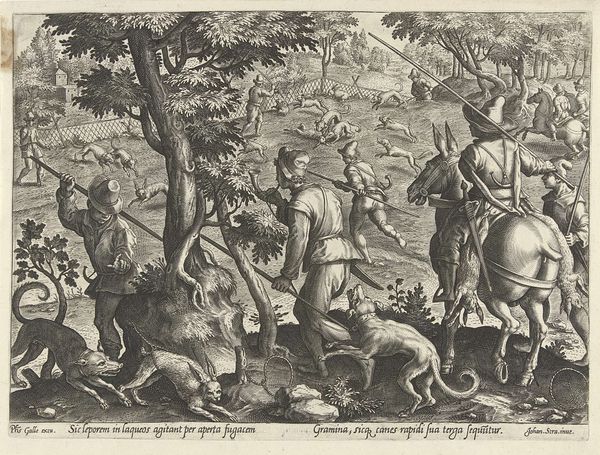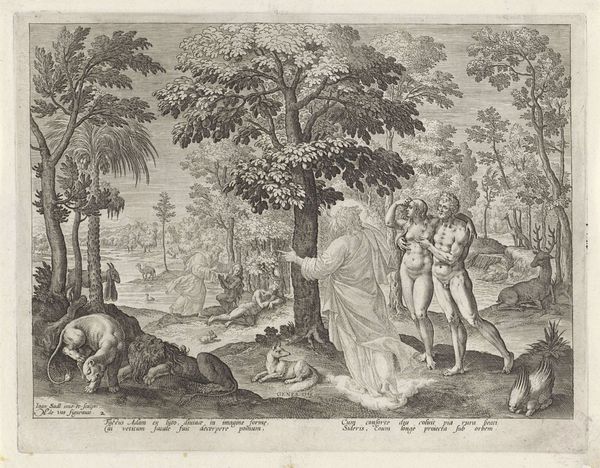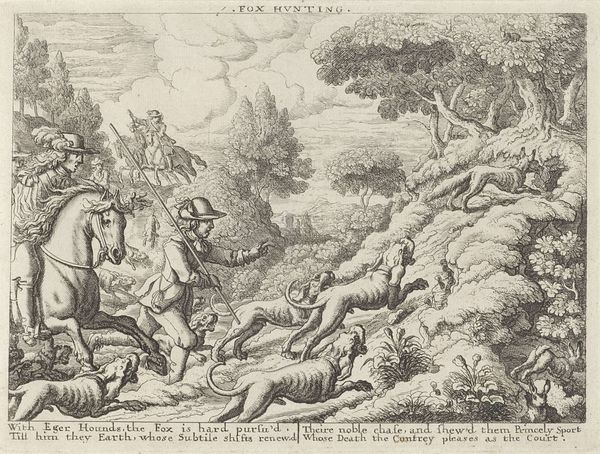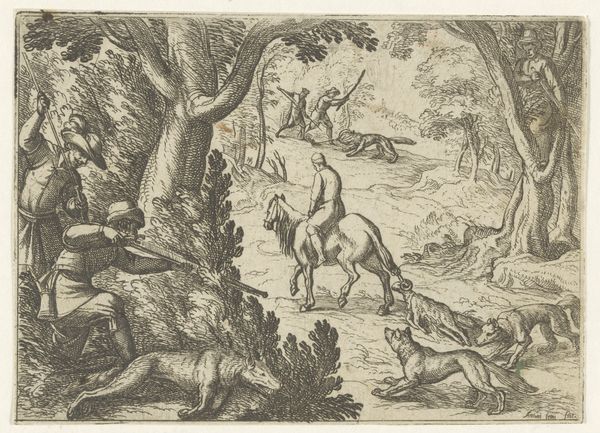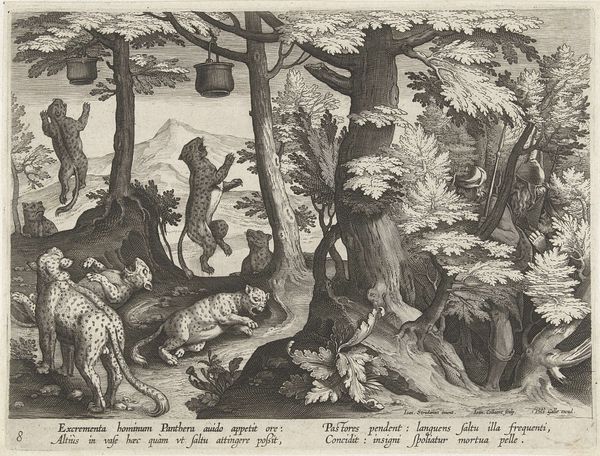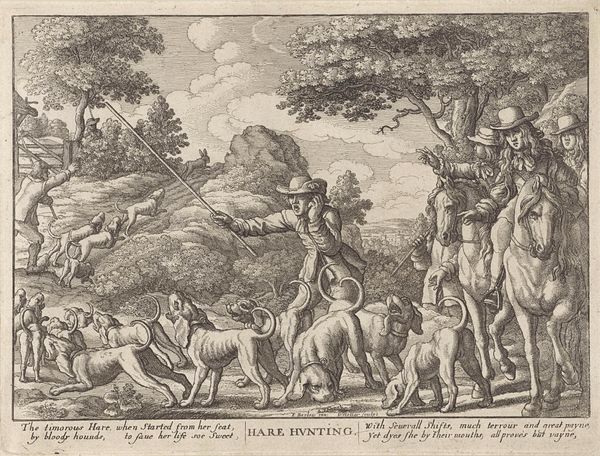
print, engraving
# print
#
landscape
#
figuration
#
history-painting
#
northern-renaissance
#
nude
#
engraving
#
realism
Dimensions: height 197 mm, width 248 mm
Copyright: Rijks Museum: Open Domain
Curator: Look at this engraving. It's titled "God the Father Blessing Adam, Eve and the Animals," dating back to somewhere between 1588 and 1600. The artist is Johann Sadeler I, and we're lucky enough to have it here at the Rijksmuseum. Editor: It's captivating. The density of detail, the way the figures are placed… it feels like a slightly unsettling Eden. There's a sense of fragility despite the abundance. Curator: That abundance reflects a specific theological viewpoint popular in Northern Renaissance art: God's creative power, shown by populating Earth. It speaks volumes about the period's emphasis on biblical narratives as a way to convey social order. The print medium itself allowed these ideas to spread rapidly. Editor: The composition seems to be pushing realism. It's compelling to look at Sadeler’s rendering of forms and the play of light, particularly with his masterful use of hatching. Though some proportions appear unnatural if you really stare at it... Adam and Eve look somewhat removed from the animals. Curator: And yet, in the original sin mythos, isn’t mankind set apart from the natural world? Even though Sadeler presents us with the animals in abundance, he has separated Adam and Eve to be the key observers of all this earthly presence. Editor: From a compositional angle, the positioning of God the Father—almost superimposed on the landscape but separate—creates an interesting tension. It visually establishes a clear hierarchy of subject matter that's also reflected in the varying light and shadow. Curator: Absolutely, the light draws your eyes directly to God and the figures of Adam and Eve. It is important to note how this piece existed as a tool. Sadeler prints such as this allowed greater publics exposure to very important historical motifs from the Judeo-Christian tradition, regardless of religious affiliations. Editor: Thinking about the print’s technique… the detail is extraordinary considering the limitations. And its survival gives this moment immortality as a creative endeavor. Curator: Well put! Each time it’s displayed we bring its history into present conversations around art and how biblical and historical art serves or affects a community. Editor: Indeed, it is a layered piece visually and theoretically that certainly bears reflection.
Comments
No comments
Be the first to comment and join the conversation on the ultimate creative platform.

